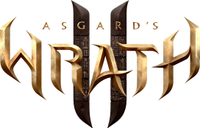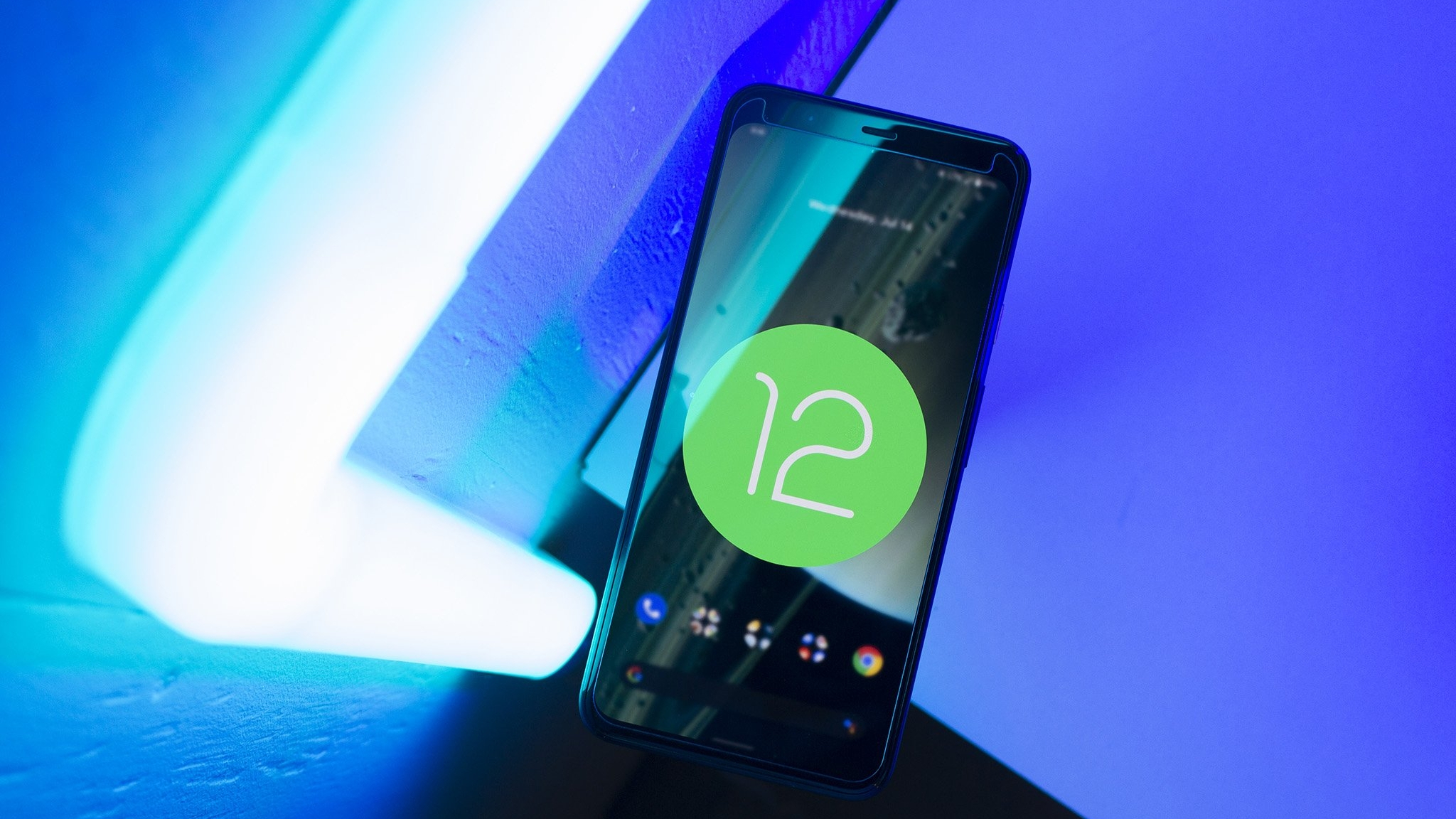Asgard's Wrath 2 is the VR Zelda I've been waiting for
A game so deep and detailed you won't believe it's on Quest 2.
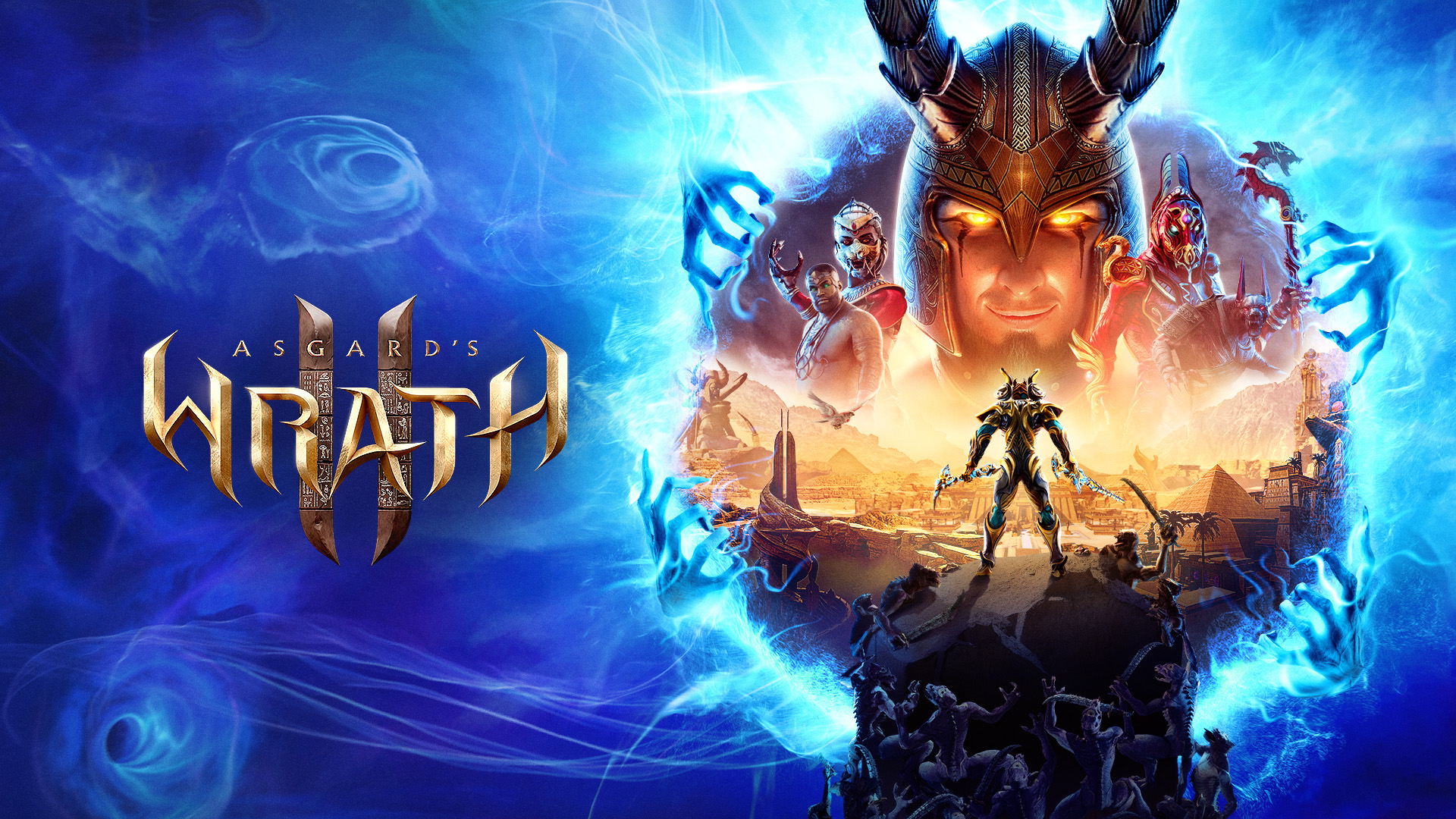
Without superlatives or hyperbole, I can officially declare the entire team at Sanzaru Games to be a host of witches and wizards unlike any that have graced our mortal realm. After all, what I've seen of Asgard's Wrath 2 — and discussed with Sanzaru Games' Studio Creative Director, Mathew Kraemer — should be completely impossible.
Asgard's Wrath 2 is the long-awaited sequel to one of the highest-rated VR games of all time, unveiled as part of the Meta Games Showcase. The original Asgard's Wrath had the advantage of launching on the PC, giving Sanzaru effectively unlimited processing potential to realize their dreams of a brilliant Asgardian tale of Loki's deception.
But for the sequel? This Quest-exclusive title bears the visual resemblance of the original game — including the graphical prowess and the scale of the battles — but, most impressively, actually goes beyond the original in scope. It's a 60-plus-hour RPG set in a massive world that spans different Asgardian realms — including surprises like Egyptian lore — taking every single conception you have about VR games and throwing them out the window.
Even the best Quest 2 games aren't this big. It's the game we've waited years to see in VR, and it's going to blow your mind as much as it blew mine.
Fight through the realms of Asgard, Egypt, and more as you chase down Loki and attempt to save the fabric of time itself in Asgard's Wrath 2 for the Meta Quest.
Preorder now to receive a free download of Asgard's Wrath 1 on the Rift store on PC. Plus, get an Asgard's Wrath 2 Meta Quest home environment and an exclusive Asgard's Wrath 2 character bundle for use in Population: One!
Preorder now at Quest Store
Stepping over the graphical threshold
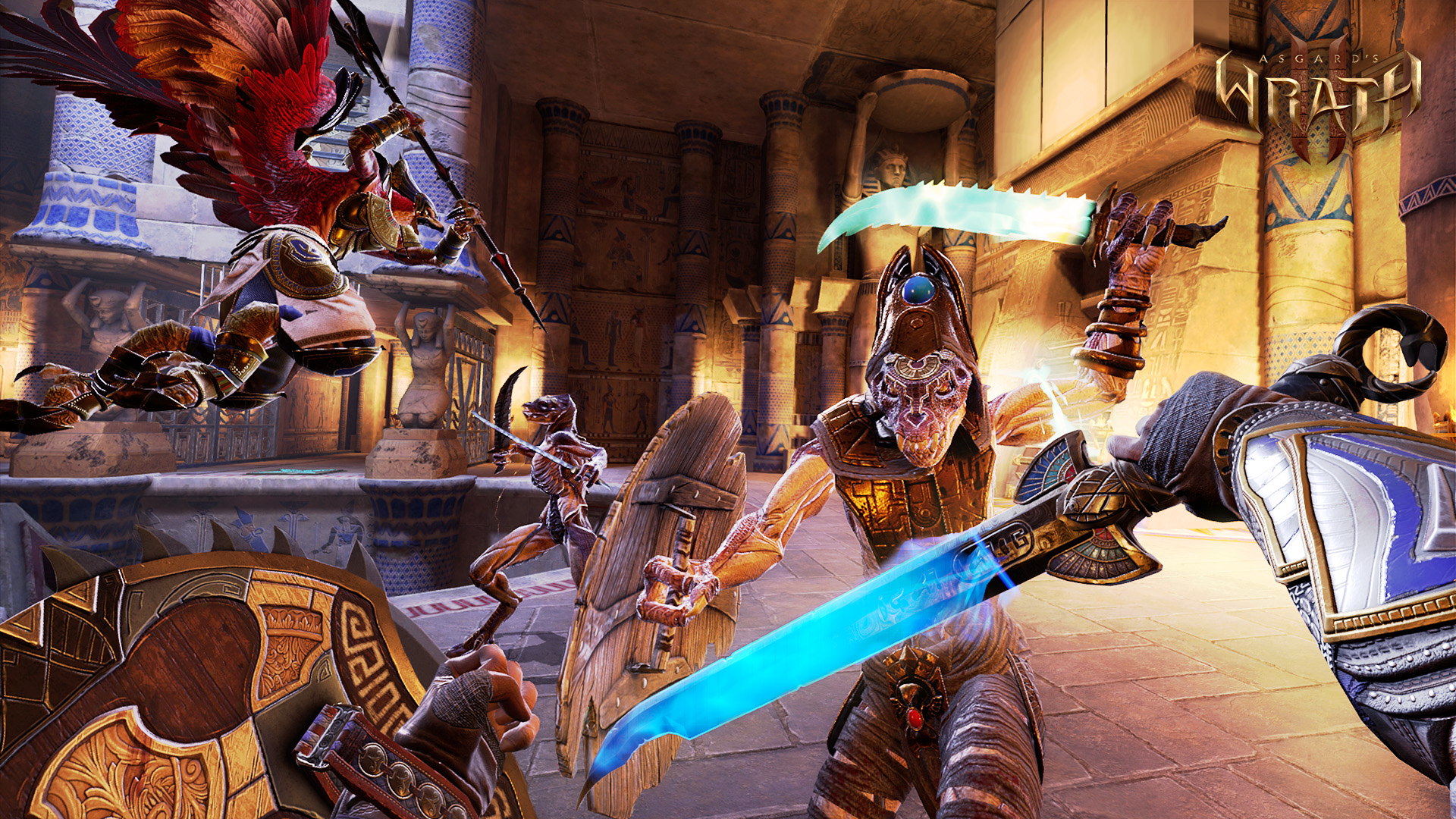
When Kraemer told me Sanzaru Games "likes to do stuff that is impossible" with each of its games, he wasn't kidding. By all accounts, Asgard's Wrath 2 looks like a game I expect to see when the Quest 3 gets fully unveiled later this Fall, yet, it's still running on the aging Quest 2 hardware without a hitch.
Kraemer told me the boss battles are likely what's going to blow gamers away the most — if the giant world doesn't do that first, of course. "This doesn't look like a PS2 game just because it's on Quest," he told me, and we can see that for ourselves in the videos.
The god boss battles are "as epic as anything you experienced in Wrath 1. These are epic, huge, top-tier god-on-god battles with the scale you expect." Probably more than expected given most people's expectations of the scale of Quest 2 games, to be frank.
Be an expert in 5 minutes
Get the latest news from Android Central, your trusted companion in the world of Android
This doesn't look like a PS2 game just because it's on Quest. It'll absolutely blow away your expectations of what a Quest game can look like.
And I think it's here where the "console cycle" really starts to kick in for the Quest 2. When I asked Kraemer what the secret sauce was for the developer's success in taming this hardware, his answer was tamer than I expected.
"It’s really about being in pre-production and setting your guidelines and goals early."
Asgard's Wrath 2 runs on Unreal Engine 4 — not some special in-house engine designed for the Quest 2's silicon — and Kraemer insists its just a mix of expertise from the team and a lot of care that went into planning limits and rules early on.
And while he wouldn't talk about it at all during the interview, I'd be surprised if there weren't some special improvements in store for the Quest 3 when this game comes out in Winter 2023. It'll actually be one of the only $60 games you'll find on the Quest!
A giant, sprawling world

Throughout my interview with Kraemer, there's one topic he kept circling back around to: the giant, sprawling world that awaits players in Asgard's Wrath 2. That's unlike Wrath 1, which was mostly linear with some open pockets.
"This is the biggest thing you will ever play on the Quest. We’re talking 60-plus hours of gameplay, massive, huge expansive worlds to play through...compared to Asgard's Wrath 1, this is opened up tenfold."
Talk about setting expectations!
And just as you'll find in recent Zelda games like Tears of the Kingdom, Sanzaru Games has designed Wrath 2 to be played the way you want. If you're someone who just enjoys blowing through the main quests to follow the narrative from start to finish, you can totally do that and avoid the gazillion other things there are to do in the world.
And that narrative should be just as good, if not better, than what we got in the first game. Players who didn't experience that title can play through a short recap of what happened in that game. Yes, play through, not just sit and watch a 2D movie or read through a bunch of boring dialog.
This is the biggest thing you'll ever play on Quest. Compared to Asgard's Wrath 1, this is opened up tenfold.
This is a direct sequel to the first game and picks up immediately after the first left off: with you being trapped in the tavern by Loki — voiced again by Matt Mercer — after studiously completing all the assignments he gave you. Turns out, those stones you collected in the first game are the key to unraveling the fabric of reality and The Fates aren't too thrilled with Loki's idea of what reality should be.
But don't expect the usual cast of Norse gods and characters in this game. While Loki is still a trickster, players will find themselves in the Egyptian realm dealing with totally different gods — and, even then, gods like Thor might not be who you expect them to be.
Don't expect the usual cast of Norse gods and characters in this game. While Loki is still a trickster, players will find themselves in the Egyptian realm dealing with totally different gods, too.
In a way, Wrath 2 can be described as a bit of an amalgam of a Metroidvania and a Breath of the Wild style game. Completionist types will especially appreciate just how much detail has been etched into the world, and there's plenty of reason to backtrack and revisit places you've been to complete puzzles or collect things you previously might not have needed. More on that in a bit.
As you progress through the world and gain powers to unlock new areas, Kraemer says these areas are "not like you're just opening up a little nook in a cave and you open a treasure chest and you're done. These are big areas. Like, you open up a whole new part of the map. We want to make sure you’re heavily rewarded and that you get lost in this new side area. You’ll meet new characters, find new storylines, there’s just so much to discover."
Throughout the world, you'll find plenty of flora and fauna that can be collected or hunted to produce collectible materials. These materials can be bought or sold at vendors, used in upgrades, or even crafted into new weapons, armor and items via recipes.
And don't worry if you don't want to spend hours riding around virtual landscapes looking for that one shiny yellow flower to complete a recipe. You can do that, if it tickles your fancy, but Sanzaru also allows players to auto-craft recipes by using in-game currency to get the stuff they're missing and get on with the next thing.
Wrath 2 can be described as a bit of an amalgam of a Metroidvania and a Breath of the Wild-style game with plenty here for completionists and story-focused players, alike.
The environment is designed to feel alive and palpable, too. Kraemer says the team is always thinking of what players would want to do with objects found throughout the world. Sometimes, that means simple things like kicking sticks into fires or throwing rocks at breakable objects. Other times, it might mean using a unique combination of abilities to solve puzzles in unconventional ways.
Certainly sounds like Tears of the Kingdom, if I ever heard an apt description.
Puzzles as good as the combat

For me, the biggest draw of the original title wasn't just the epic combat, the unique hero units, or the perspective switch-up. It was the surprisingly deep, Zelda Dungeon-esque puzzle areas you'd have to complete.
But Kraemer says the team isn't resting on its laurels and following the same formula this time around. It's diving even deeper than before.
"In the first game, a lot of the puzzles in my mind were somewhat binary and meaning like oh, I needed this follower, and this follower, you kind of put them together to solve whatever puzzle. In Wrath 2, a lot of the hero and follower puzzle combinations are very unique. There are a lot of ways to solve puzzles. It’s really fun for players to figure out those combinations on their own and have different solutions."
Puzzles can be solved more organically this time around, including with your own invention of unique combinations of powers, characters, and the environment.
Kramer says Sanzaru wants to provide ways for players to feel “like they’ve trumped the game” by figuring out something unique with a weapon or mechanic that the game doesn’t specifically divulge.
"We want to have plenty of those ‘oh, man, that totally worked like I thought it would!’ moments." I know I have had plenty of these in Breath of the Wild or Tears of the Kingdom over the years and it seems like Kraemer is looking to have a similar approach here.
And it's not just the "dungeons" or specific puzzle areas where this will come in to play, either. Kraemer says that tons of minigames are scattered around the world, some of which are tied to specific NPCs, heroes, or followers that you’ll have to find before you can take part in them.
The powers of a god
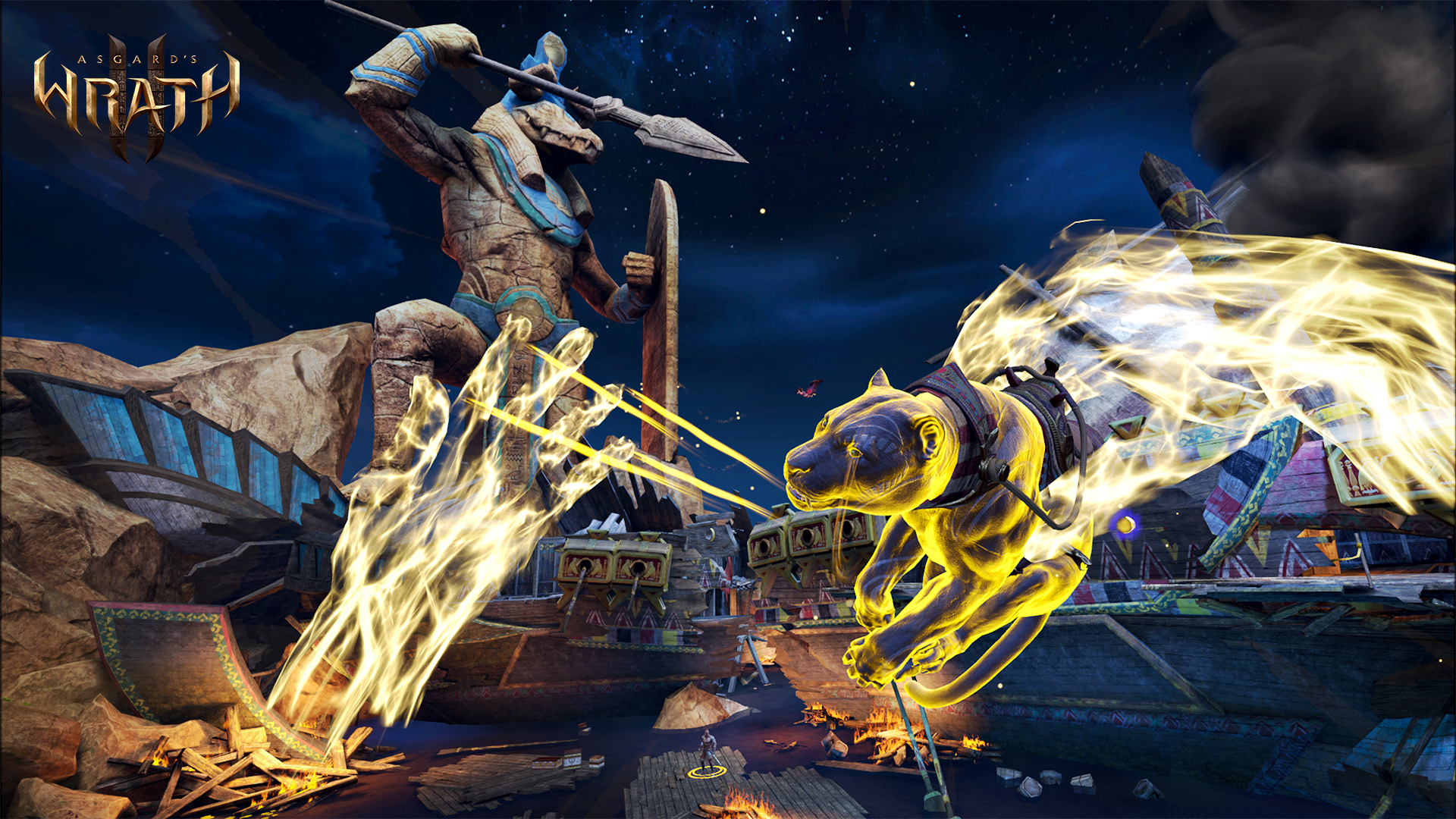
As in Wrath 1, Wrath 2 features a hideout where players can head back to for safety and storage. While this hideout is similar to the tavern in the first game in that it is not customizable, it's different in that it's both larger and has its own ecosystem of quests.
As you traverse the world, you'll meet hero and follower units, alike. But why, pray tell, would anyone in this world just follow you? Because you're a god, of course.
The Asgard's Wrath series sets itself apart from the pack of hack-and-slash VR games not just by providing giant worlds and RPG systems, but also by providing players with many different perspectives from which to explore.
In Asgard's Wrath 2, players embody a god that can possess mortals and befriend followers, each with its own unique perspective and skillset.
One moment, you might be looking through the eyes of a hero unit who wields a whip sword and a buckler shield. The next moment, you've evicted your possession of that mortal's body and now have a birds-eye view of the world around you, able to manipulate entire portions of the landscape at your beck and call.
Kraemer tells me that Sanzaru does "some things I haven’t seen any VR game do with the god-scale stuff.”
Wrath 2 ups the ante here by introducing a third element to that strategy: followers. The hideout gives players a place to amass all the heroes and followers they've found in the game, giving them quick ways of possessing heroes and befriending followers.
Every hero and follow is completely different and has its own skill tree, weapons, abilities, and talets.
Kraemer tells me that "every single hero and follower that you meet is completely different. All the weapons, all the gear, they're totally different." Because of this, players will find themselves regularly switching out heroes and followers to find the combination of weapons, powers, and gameplay abilities that best suits them.
As you progress in the story and defeat enemies, you'll earn XP that can be used to level up your hero units. Each hero unit has its own skill tree, abilities, and super powers. It's not at all dissimilar from most action RPGs available today, but Sanzaru switches things up not just by giving players several hero units to choose from, but also those followers to use, as well.
Followers can be thought of as sidekicks, creatures you cannot possess but can be either brought alongside in battle or ridden into battle at any time.
Yes, followers also double as mounts.
Getting around (without getting sick)
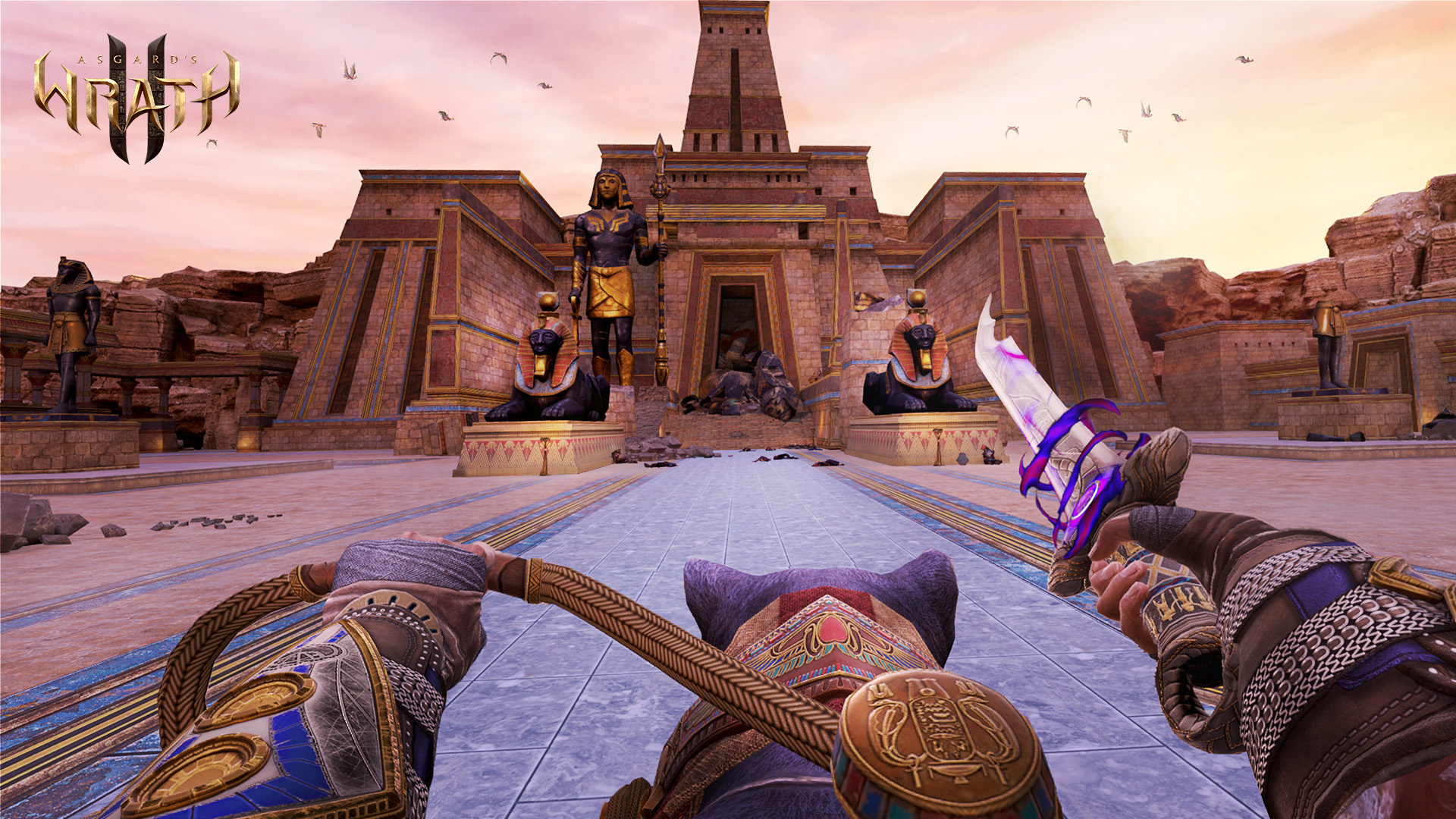
Every hero that you'll possess in Asgard's Wrath 2 has its own unique grapple mechanic, but each one serves a main purpose: to help players quickly navigate the huge world. Abraxis has a sword that turns into a whip, for instance, which can be used to close the distance between enemies or to interact with puzzle elements.
You can grapple to your mounts to quickly traverse between large spaces then, while riding the mount, whip right back to your target enemy and begin the battle. Kraemer says “it’s got a whole kinetic flow that feels awesome.”
Grappling allows players to create unique combinations of contextual moves, like grappling an enemy that’s high up to use them as an anchor to get somewhere you couldn’t get before.
Every follower can be converted into a mount that players can ride across the landscape.
"In Wrath 2, you’re going to be climbing, jumping, wall running, etc. We have a lot of contextual actions that feel very kinetic and it almost feels like you’re playing Jet Grind Radio or Tony Hawk. We think the contextual system is going to be a game-changer for players.”
But don't think you'll just be jumping on the back of your mount and riding it everywhere. The team has specifically aimed to take the tedium out of the big-world formula by providing world anchors that can be found and earned throughout the game.
“Wanted to make it easy for players to hop back and forth because there’s a lot of shifting around the landscape and revisiting and replayability there,” Kraemer said.
You won't just be riding mounts and warping, you'll also be grappling, climbing, wall running, and more.
Kraemer told me that Sanzaru developed all of these systems around two main types of people: the "individuals that just bought a headset for the first time and this the first game they're getting into VR" and "the hardcore VR game players that want to be in there for hours at a time."
"We do have a ton of accessibility options...both for movement, combat, whatnot, and then also a bunch of options just to make the game easier or harder at will"
Sanzaru put accessibility first, providing comfort options and plenty of opportunities for players to experience the game at their own pace.
While jumping to a mount, for instance, players can take a seat on the ground or a nearby couch if standing on the mount makes them feel a bit woozy. Likewise, contextual physical objects in the game — like reigns on all the mounts that can be grabbed and used to steer — should help players that might get motion sick when using a joystick to virtually move around.
Menus, likewise, will "offer both point-and-click and more physical ways of interacting, depending on what you as a player want to do."
There are even "some cinematic moments where we pull the camera out to a third-person view. Every part of the game where you get introduced to a new follower or a new hero will have a huge pinnacle cinematic moment."
Combat for everyone
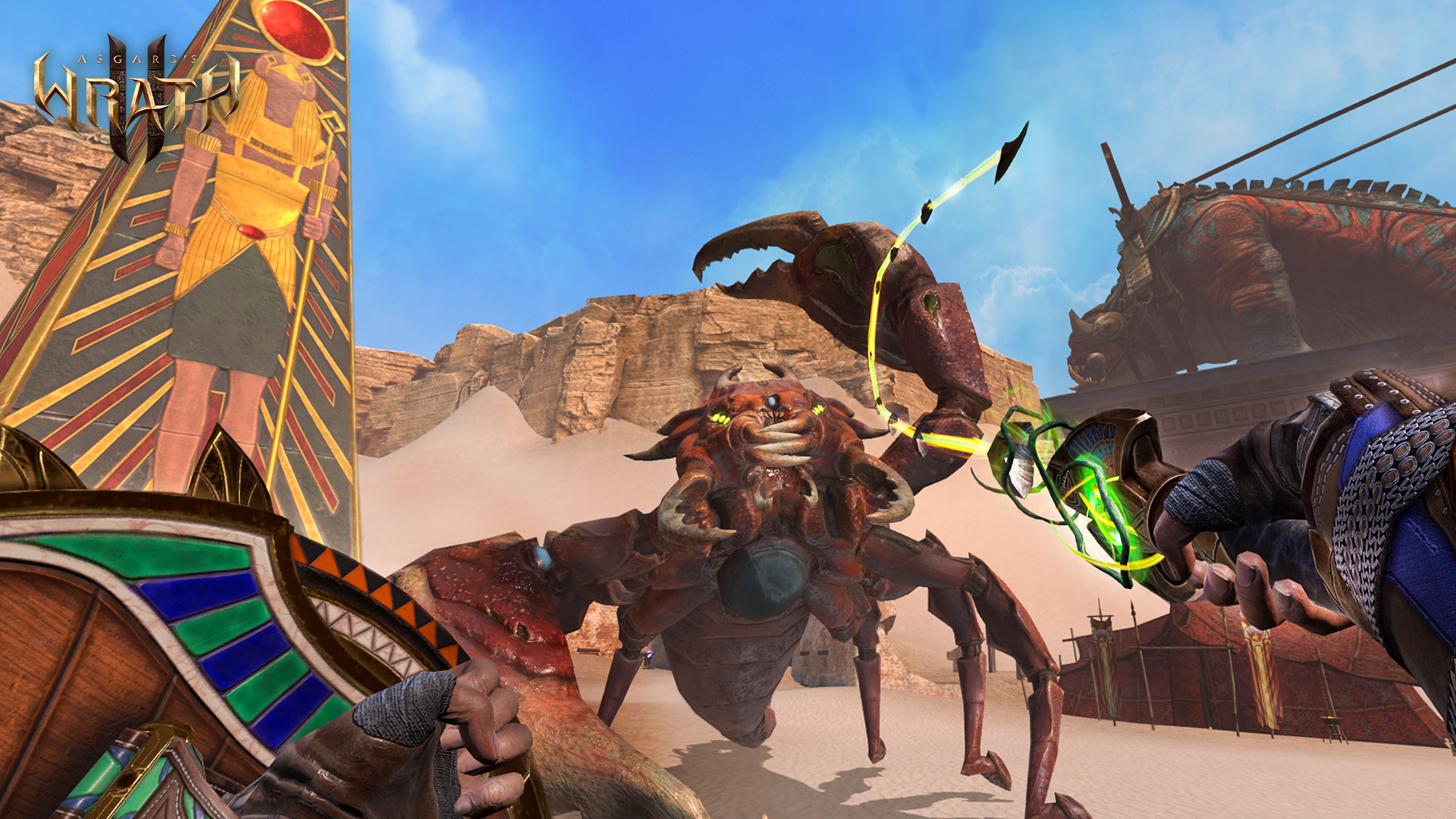
Just as with movement, Kraemer began our next topic by saying “Accessibility is the number one thing with combat in this game because we want to cater to so many different play styles.”
It's still very physical combat that relies on physics-based weaponry and a player's own physical stamina, but it's designed to be more open-ended than before. Wrath 1 might have had defense-first style combat but Wrath 2 won't pigeonhole you into that corner.
Combat isn't the same old same old. You can still hack and slash if you want, but it pays off to show a little ingenuity.
“You can fight enemies in Wrath 2 the same way you did in Wrath 1 by physically chipping away at their runic armor, parrying, etc. but we have introduced several new methods to fight enemies to make combat a lot more accessible. Weapons have different mechanics and combos, shields can be used, weapons can be thrown and stopped in mid-air before being called to return back.”
And players who work to improve their physical fighting abilities and tactics will also be rewarded with special rewards in combat, so flailing around and trying to cheese the game will only get you so far.
A unique twist on multiplayer
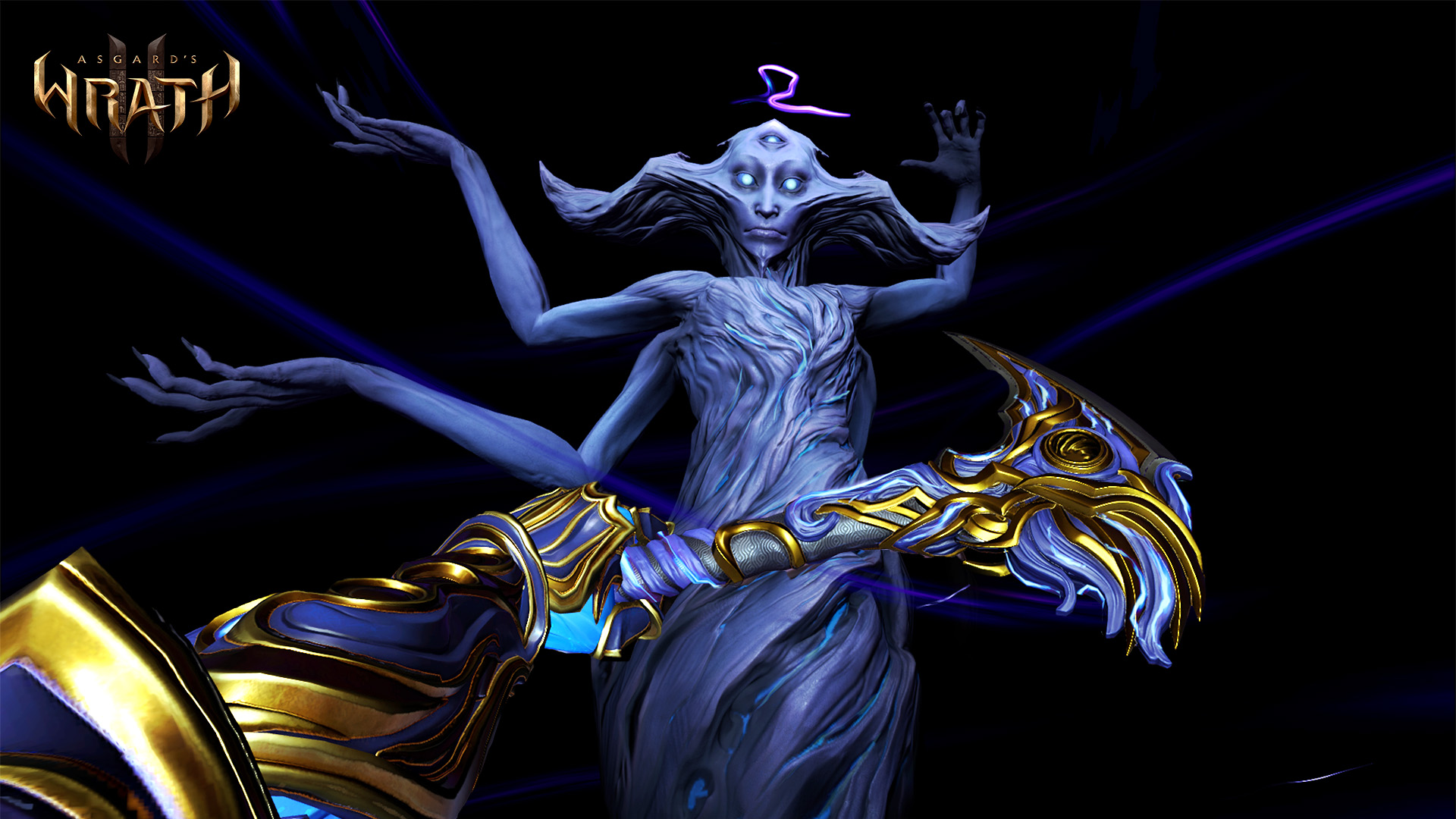
There's always going to be that moment when you feel like you've seen and done everything, even in a game as big as Wrath 2. But Sanzaru has designed it so players will keep coming back for more with its Uncharted Depths game mode that's unlocked a little ways into the main story.
Uncharted Depths is an entire game-within-a-game, a roguelike action title that works exactly as you might expect: progress through a dungeon and kill as many bad guys as you can until you die.
Uncharted Depths is an entire roguelike game within Asgard's Wrath 2 where players can dive deep into dungeons and earn loot for the main story.
From that point on, the script flips a bit. When players die in the Uncharted Depths, they'll be presented with the opportunity to send out a Divine Soul or a Dread Soul. If you've ever played a game in the Dark Souls series, you'll be immediately familar with this concept.
A Divine Soul is a friendly, golden hand that appears to be reaching out from a rift in another player's game at the exact spot where you died. That player can then choose to pull your character out of the rift and have your soul fight alongside them.
This soul is computer controlled and does its duty while you're not playing Asgard's Wrath 2, giving you a way to progress and earn rewards even when you're offline.
Aside from competing on leaderboards, players can send out their spirit to aid or conquer other players, earning even more loot even while they're offline.
The flipside, of course, is sending out the red Dread Soul that aims to end a player's run right then and there, earning a completely separate set of rewards that can only be earned by a Dread Soul defeating a player.
No matter what soul you send out, that character will be outfitted with your exact stats and items earned and found in each Uncharted Depths run, meaning better players will post riskier rewards and challenges for their rivals.
Plus, Uncharted Depths morphs and evolves as you progress through the main story, giving you plenty of reason to check it out at regular intervals.
All of your achievements are ranked on leaderboards and Kraemer says that Wrath 2 will regularly notify you if your friends are progressing faster or better than you, so there's plenty of positive peer pressure to keep you in the game.
All in all, I can't think of a better way to introduce players to VR when it releases later this year, especially given the Quest 3 is releasing at least a few weeks prior.
It's the most epic quest you've ever taken on Quest. Nothing will prepare you for what awaits in Asgard's Wrath 2!
Preorder now to receive a free download of Asgard's Wrath 1 on the Rift store on PC. Plus, get an Asgard's Wrath 2 Meta Quest home environment and an exclusive Asgard's Wrath 2 character bundle for use in Population: One!
Preorder now at Quest Store

